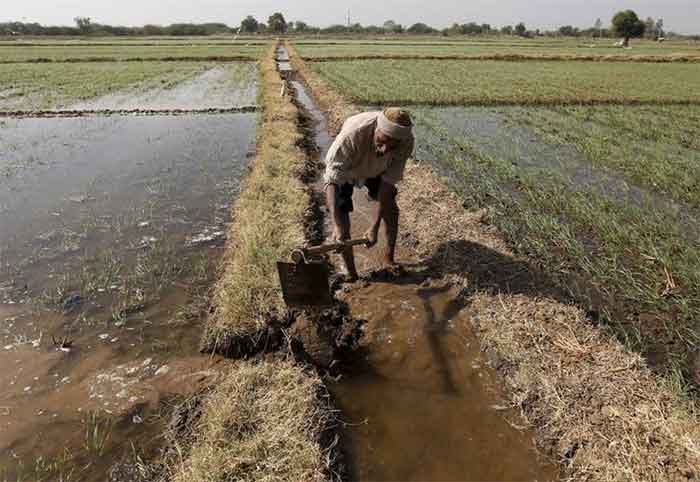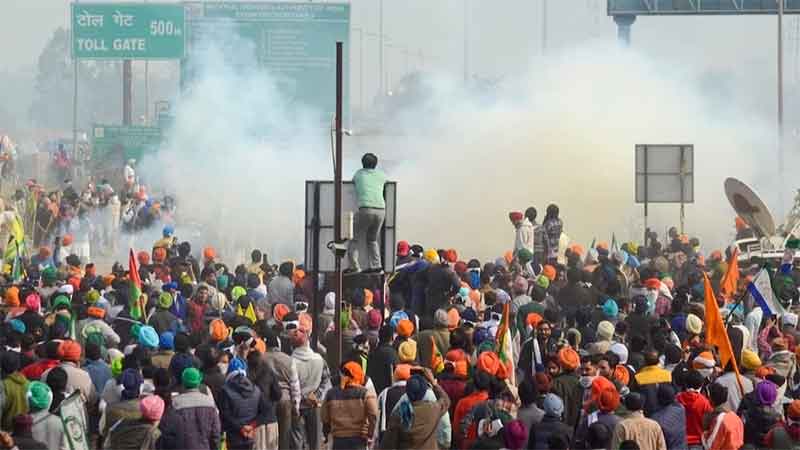
Hidden behind the dark, despotic aura oozing over India is a racial minority that holds power who defines the norm by imposing the social slavish mentality over the nation’s religious majority. Redefining the State as a racist, discriminatory’ money-machine’ facilitating transfer of wealth to the privileged elites – the 10% who now own more than 42% of India’s total wealth. Apparently to sustain this upward wealth transfer this class of elite trustee-bailiffs are compelled to reshape dominance over the subordinated majority by offering India on a platter: safe investment destination for the forces of global finance capital.
With the subordinated majority silenced the Parliament churns out statutes (and erect statues) to secure, preserve, and guarantee returns on capital. Further complemented by a tax regime that maximizes the transfer of nations’ wealth amassed by the select oligarchs for ultimate transfer to the metropolitan capitals of finance. Such plunder without bloodshed is ensured by choking the social life of communities with chants and strings of power from the ‘glorious thousand year reign’. Chants that immobilize the people into a worshipful obeisance to the money-machine that weaves dreams of development in a trillion dollar economy – in reality, creating millionaires and increasing the count of poor (proletariat).
With unfulfilled promises, illusions of progress and ‘ache din’ remaining ever elusive the upward transfer of wealth is sustained by systematically depleting the earnings of the lower strata with development projects, and Yojanas for the future. Both terms development and capitalism says Raniero Panzieri ‘are the same thing’ and this development mantra is trumpeted with sanskritised titles to reshape the national self into a money machine producing ‘an explosion of millionaires’, and leaving peasant workers as ‘perpetual debtors living under a common subordination.’ According to statistics, the Indian segment of global capitalist society has produced 169 dollar millionaires in 2023 increasing from 157 in 2021 (Forbes). While Oxfam reports the poor have multiplied from 134 million in 2021 to 281.4 million making India the nation with the largest number of poor people much more than sub-Saharan Africa. The two ends of the spectrum reported by Forbes and Oxfam reaffirm Marx’s observation ‘that accumulation of capital is therefore multiplication of the proletariat’. The word ‘proletariat’ is not to be read as a synonym for ‘wage labourer’ but for dispossession, expropriation and radical dependence on market’.
Dispossession of ‘commons’ by statutes creates enclosures of exclusion for developmental projects. Statutes enacted with the avowed purpose of situating the nation as an investment destination denies villagers access to land marked as Special Economic Zones. Consequently villagers access to land are curtailed, livestock remains unfed, user rights over common land and water denied to citizens by Acts of Parliament reflecting an ‘artificial consensus’ for development. At the frontiers of development by legislation peasant villagers are dispossessed to ensure space for iconic statues and religious theme parks embracing technology with amusement, industrial “parks” and network of highways (Gods in the Time of Democracy, Kajri Jain). The land acquired by the State in the ‘public interest’ is handed over to private equity for development, financialised by Dallal Street and ultimately Wall Street.
The extent of ‘land-grab’ by the State is a pointer to the levels of Government infused lack and poverty over the village peasantry. Such expropriation of village commons constitutes approximately 34% of the Indian land area with an increase of 2% of land area annually for continued development. The village peasants’ lives, and livelihood are uprooted in the States commitment to Wall Street signalling the willingness to carve out land for infrastructure development, Special Economic Zones, and “parks” etc. increasing the precarious conditions of peasant-villagers.
Since the 1950’s such project-driven dispossession of land has uprooted more than 70 million people from the villages to pave the way for India to join the club of leading land-grabbing nations like China, South Korea, Saudi Arabia etc.
Throughout history the silenced majority of peasants living with dignity as self-supporting land labourers and cultivators in small village communities have always been a potent political force. Who in the past joined the anti-colonial movement resisting the colonial era land grab when 21 million peasant households gave a fresh impetus to the anti-colonial movement scripting a history of insurgency from the grassroots resisting the threatened alienation of the zameen. The number of peasants pauperised has now exceeded 281 million citizens’ – dispossessed land-losers who are denied their right to live off the commons. Peasants exercising the right to bare livelihood, and subsistence of every villager scripting an ideology in which the ‘weakest are protected from ruin’.
An age old praxis of protest by lives lived along enclosures of exploitation raising a standard challenging the money machine is the rebel-peasants manifesto for change. Protests as a collective effort by individuals and small groups termed as weak and fragmented persist across regions reflecting cultural differences and responding to the diverse modes of dominance. As citizen-subjects reclaim their agency by resisting and rewriting codes of exploitation labelled as dharma. Instead of marching to Delhi the peasant protest is localised on the public land acquired for private capital: the ‘zameen’. Taking a stand against the hawks of finance capital, the insurgents raise the slogan of dissent shredding the policy notes scripted at Dawos to be en-acted in India for Wall Street. Constantly reliving life against the ‘bourgeoisie calculus of growth, development and profit’ the peasant-rebels are signalling a unique insurgency – for subsistence, for insulation from risk, and survival of the weakest.
Sustained struggles mounted locally by dispossessed peasants have forced Reliance Industries to abandon mega projects in Maharashtra and Haryana. Farmers took up arms against a real-estate project in western Uttar Pradesh. In coastal Odisha, villagers blocked a massive Pohang Steel development. SEZs face stiff resistance in West Bengal, Telangana, Karnataka and Andhra Pradesh (Jan Bennan: NLR 116/117 March–June 2019} What the monopoly controlled media conceals are ‘the many conflicts in 130 of India’s 602 districts spreading over all States that go unreported’ (Madhu Sarin, RRI) arising from the ‘regulatory takeover’ of forests, common lands for plantations, for biofuels, national parks, sanctuaries, tiger reserves, and statues of gods etc.
Woven into the tissue of the wide spread points of protests and ignored by the elite controlled media is a consciousness of the peasant-rebel enabling the land-losers to transform their own lives. This demand for the radical transformation of their conditions of existence negates the inherited and uncritically absorbed ancient lines of graded inequality that sacralises exploitation by the ruling dominant minority. Such trials of strength reveal the sinews of insurgency demanding a halt to the private accumulation of public wealth fabricated by the money-machine kept alive by the property owning democracy. Protests as sites of conflicts constitute the field were the pauperised peasants stand with those whose crops had failed, the helpless and the ill, the aged and the widowed making their voices heard, and struggles visible. The peasant rebels ‘living manifesto’ capable of creating history by confrontation from the grassroots transforming the sites of exploitation into platforms that demand redistribution of wealth, right to live in dignity as equals inferior to none.
Vinod Kumar Edachery works with a strategic advisory firm in the Middle East. He believes that neoliberalism creates inequality and transfer of wealth to hegemony. [email protected]















































